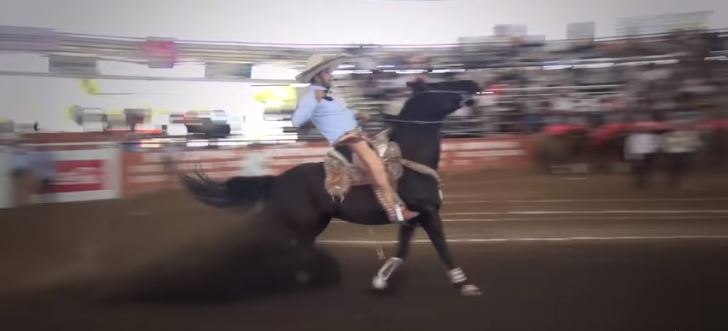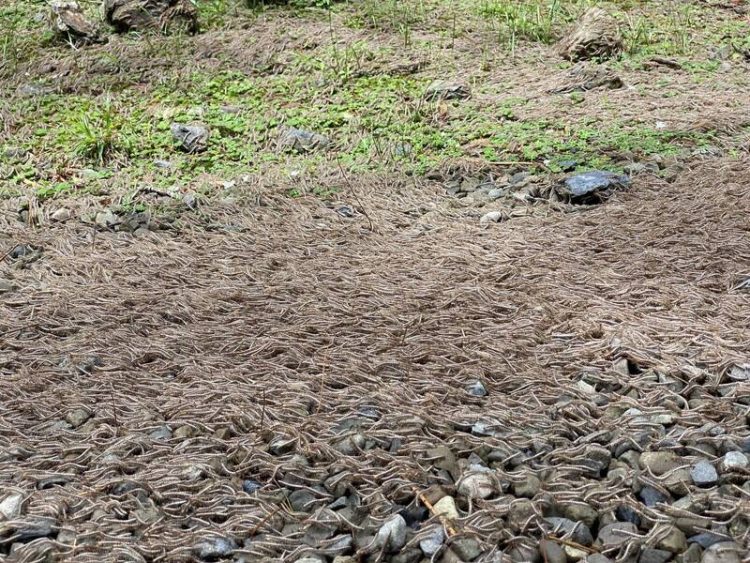If you’re familiar with horse reigning, you probably know about the sliding stop, a signature move where the galloping horse lowers its hindquarters as it comes to halt. It’s definitely impressive to watch, but it’s nothing compared to the Mexican version, the Cala de Caballo.
Cala de Caballo is one of several “charras” performed by charros (the Mexican equivalent of the cowboy) in charrerias, popular competitive events similar to the American rodeo. It involves a series of maneuvers, like turning the horse on its own axis both ways a minimum of six times, and walking backwards in a straight line, but the most impressive one has to be the sliding stop, where the charro makes his horse run at full speed and then stop abruptly by sliding on its rear legs, in a marked 20-meter-long rectangle. The competitor who leaves the longest slide marks in the marked area without going over the limit gets the most points.

The Cala de Caballo was officially recognized as a national sport in the twentieth century, and is considered one of the most important charras, because it demonstrates the connection and communication between the rider and his/her horse.
In this Mexican version of the sliding stop, judges score the speed of the horse, the posture of both the animal and the rider, and the length of the slide marks left inside a 20-meter-long rectangle filled with sand or dirt. To get the highest score possible, the horse has to begin its slide only after entering the marked area, and slide as close to the far end of the rectangle as possible. While it can slide over the limit of the marked area, only the marks inside will be measured.
The Cala de Caballo is one of the most popular events during a charreria, drawing applause, cheers and gasps from the crowd, but to animal rights activists consider it animal cruelty for the risks it exposes the horses to. Although most charros will tell you that maneuvers like the sliding stop at full gallop comes natural to horses, some experts believe that is puts enormous pressure on the ligaments, muscles and bones of the animal, and that the risk of injury is extremely high.
While Cala de Caballo is impressive to watch when everything goes according to plan, accidents can definitely happen.












